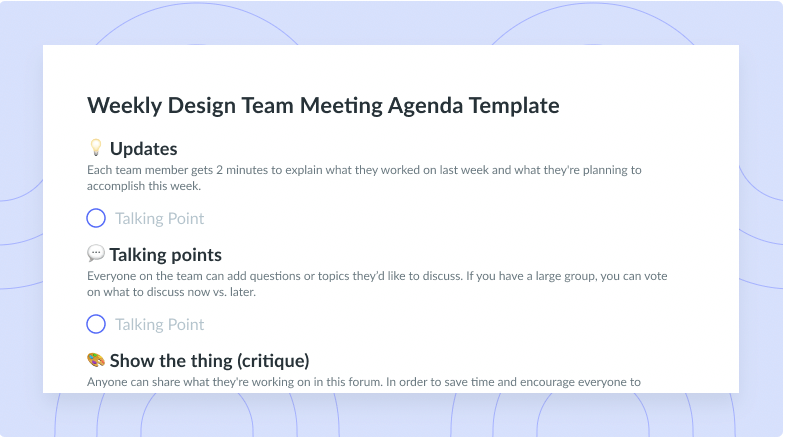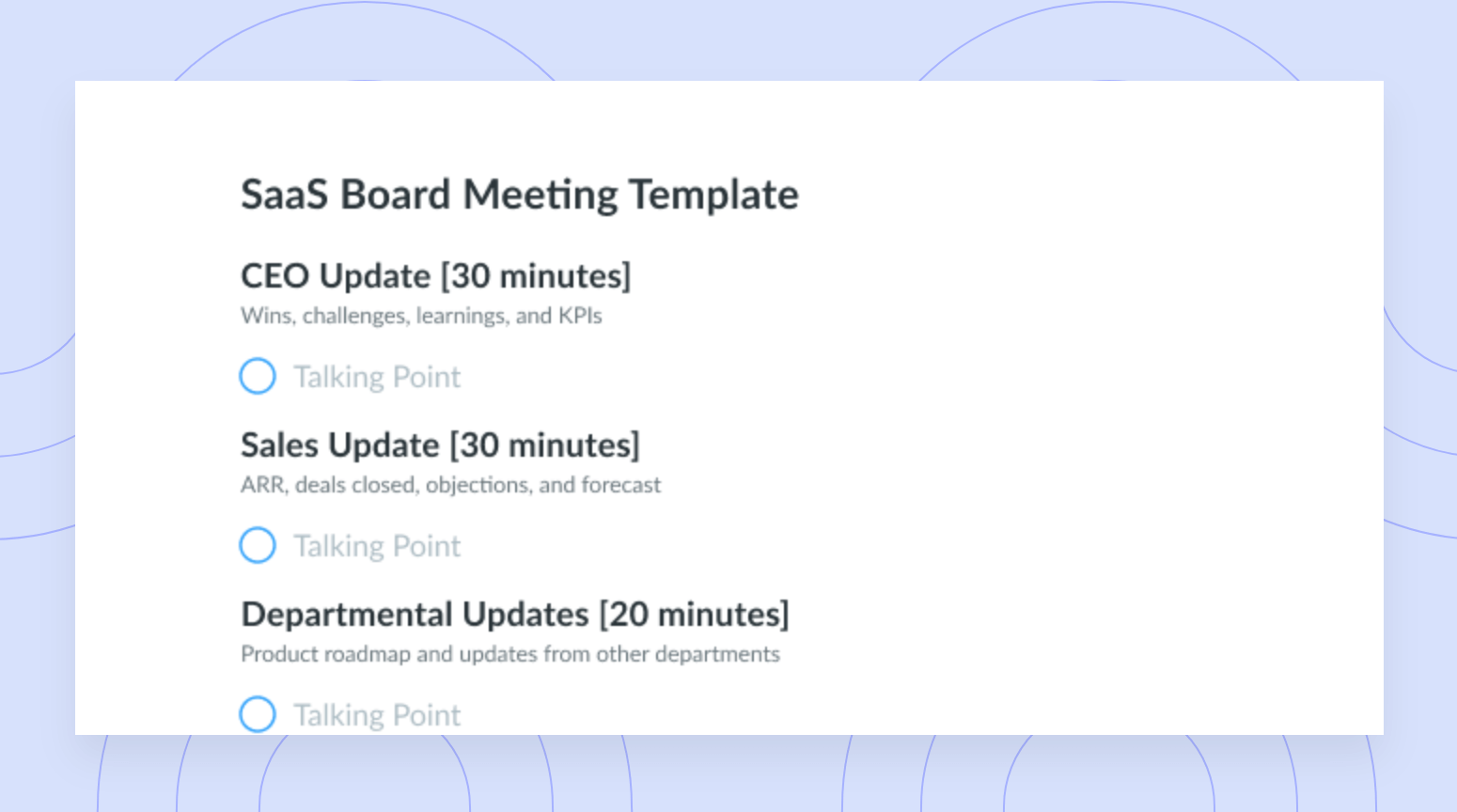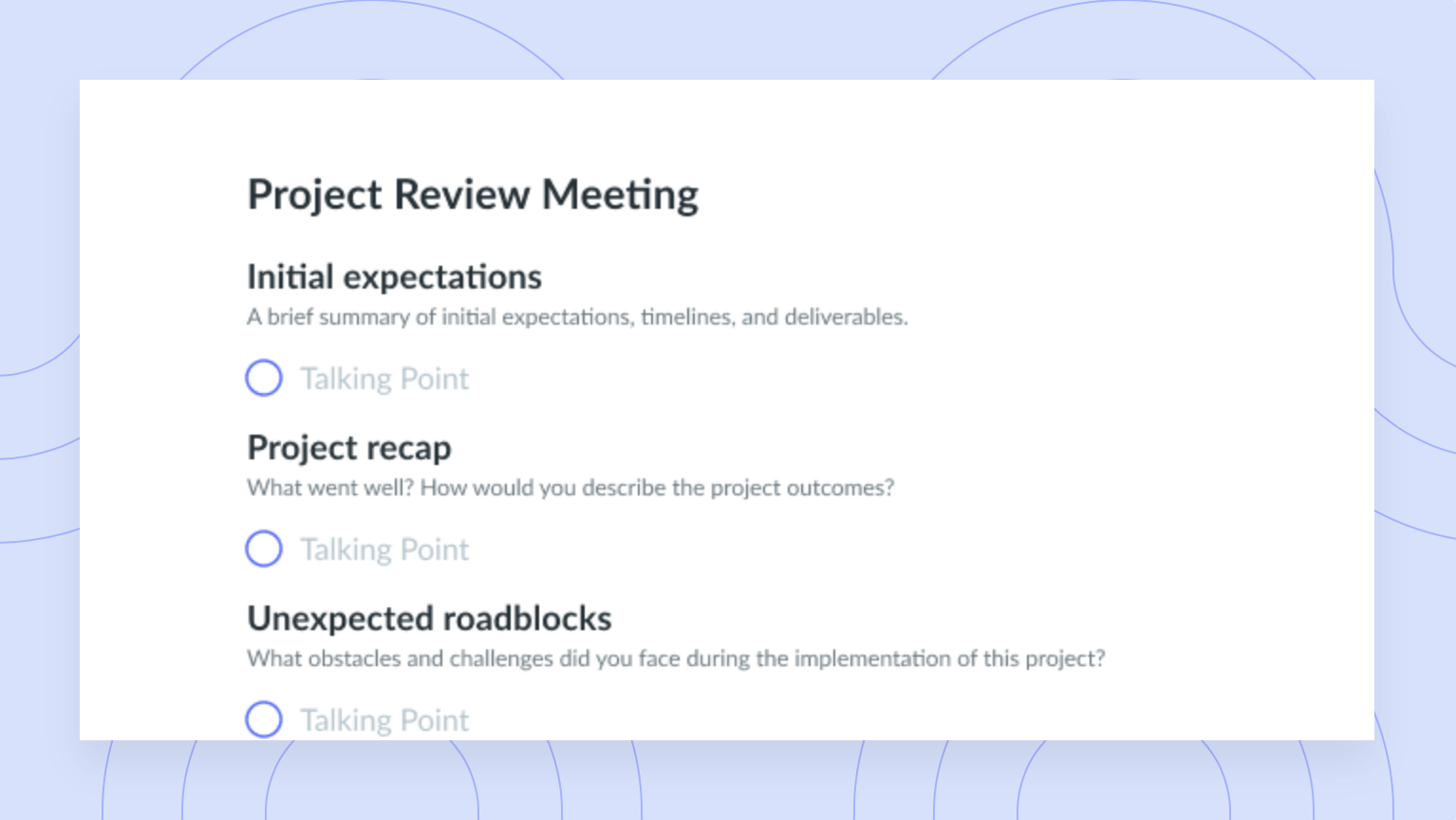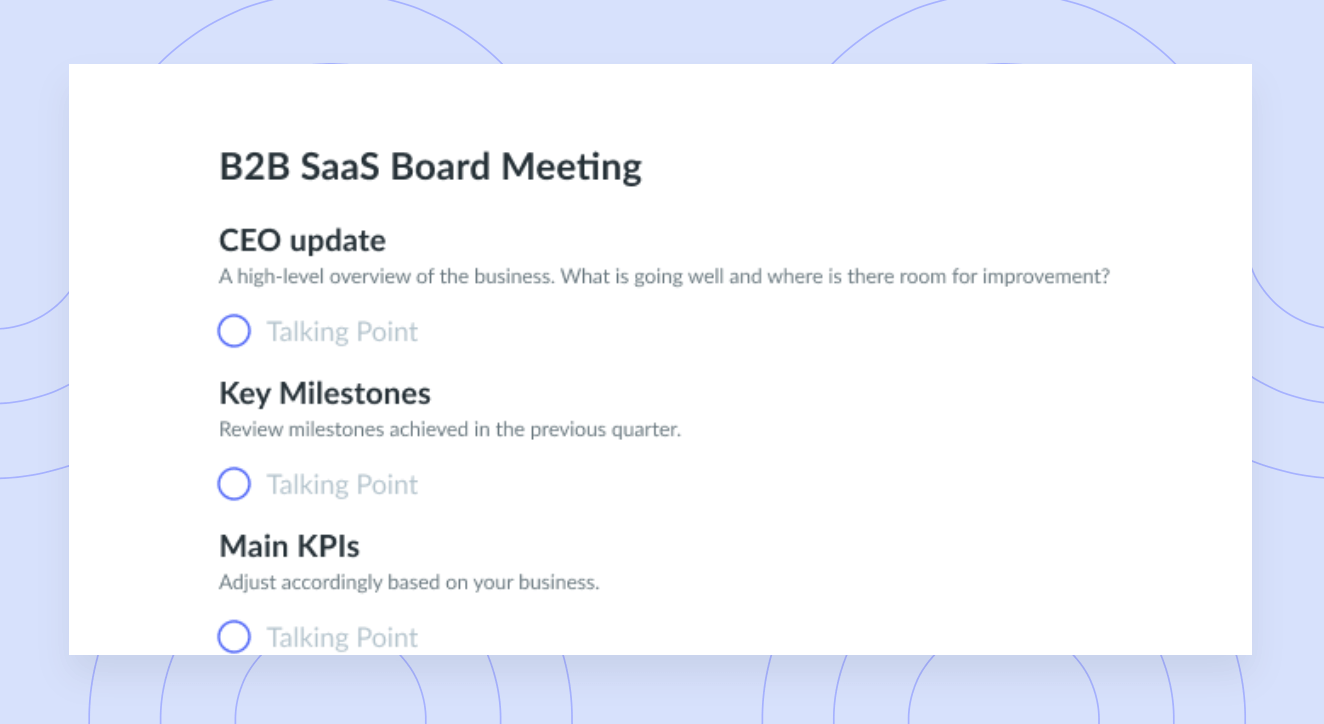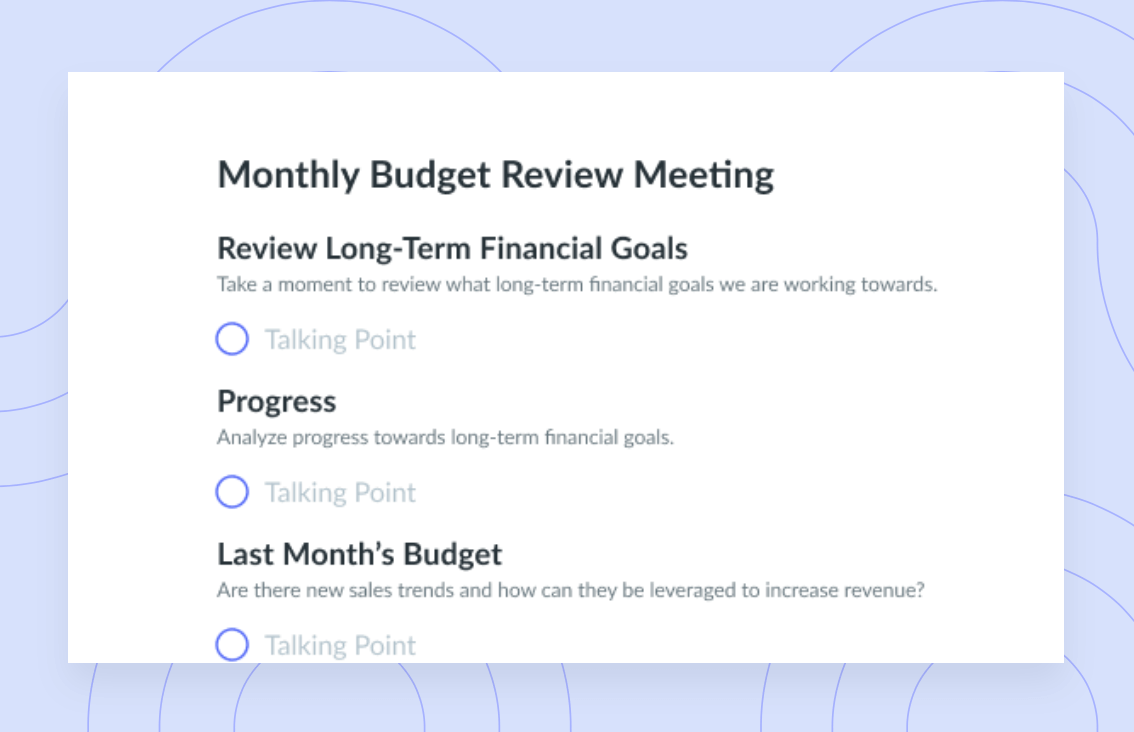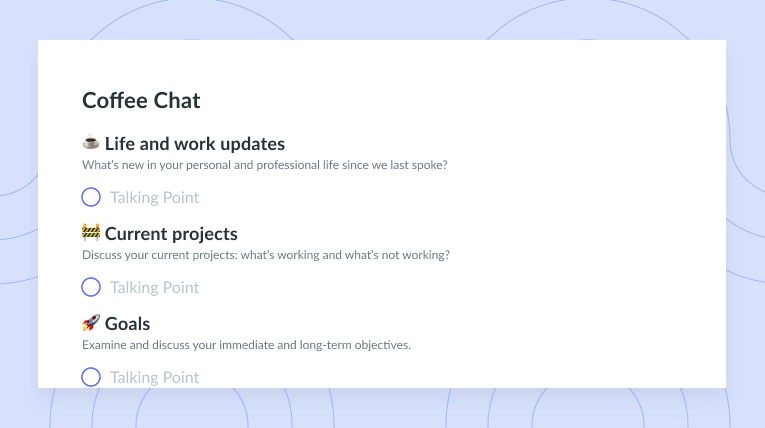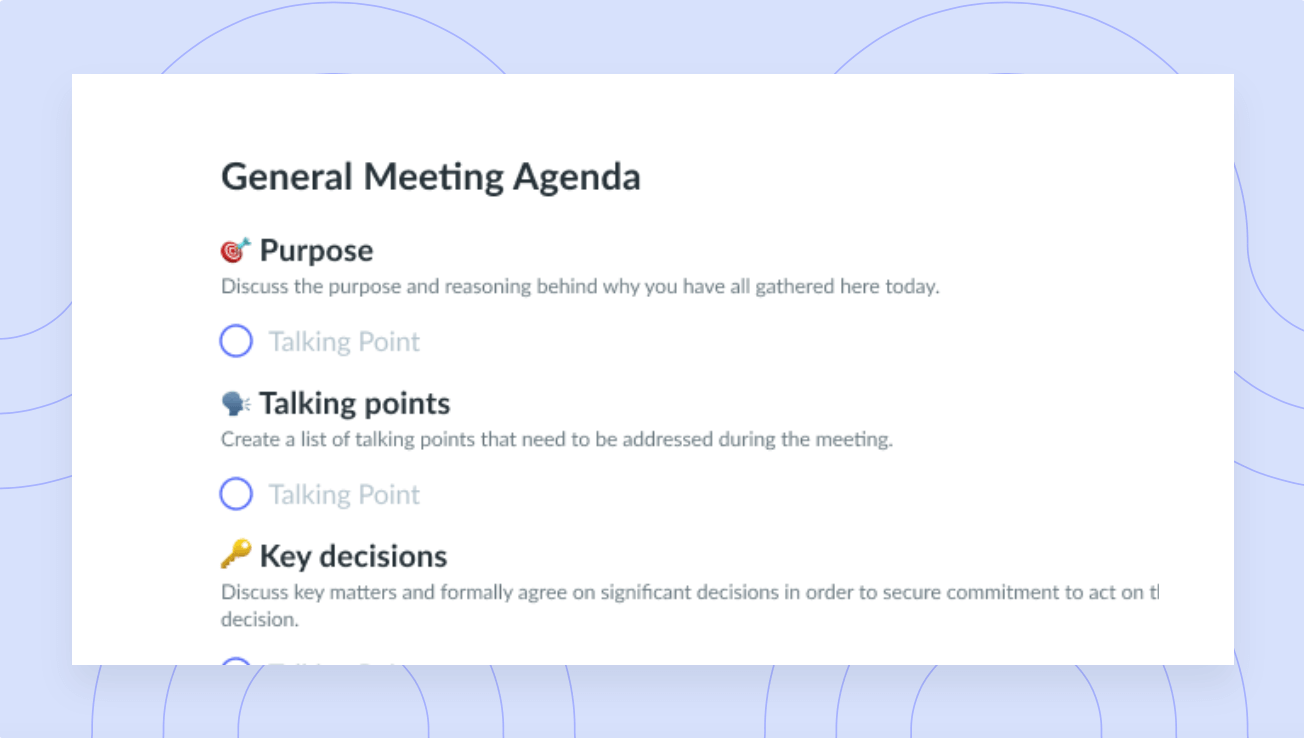How to Have a Walking Meeting the Right Way: 14 Tips
Find out how walking meetings can benefit you, and use these 14 tips to run effective and productive walking meetings.
“Sitting is the new smoking,” says a 2017 study on sedentary behaviour. In 2019, the average office worker sat for 15 hours a day. That number has likely grown with COVID-19 lockdowns and remote workplaces, since people have even fewer places to go. To combat this sedentary behaviour, workplaces can implement walking meetings to get their employees up on their feet and out of their chairs. Keep reading to discover 14 tips for hosting a walking meeting the right way.
What is a walking meeting?
A walking meeting (a type of offsite meeting) is exactly what it sounds like: a meeting that takes place while you walk. At first, this may seem unproductive or like a waste of time, but a Harvard Business Review study found that walking meetings actually lead to increases in creative thinking, productivity, and honest feedback.
Why?
According to Dr. Eytan, Medical Director at Kaiser Permanente Center for Total Health, our brains release certain chemicals that relax our minds when we walk. Additionally, Dr. Eytan says that walking meetings improve employee engagement by breaking down barriers between managers and direct reports or between coworkers.

Never miss a step
Document important talking points in a collaborative meeting agenda to never forget what was discussed with a tool like Fellow.
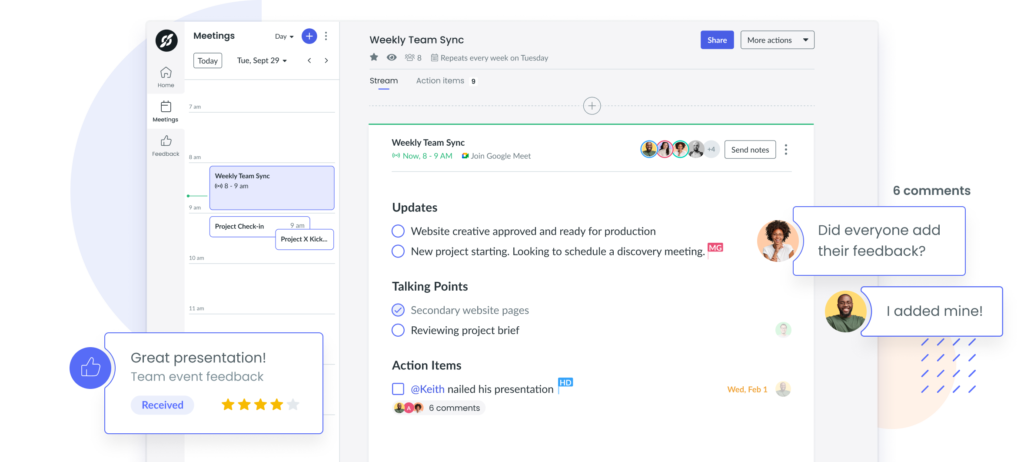
Benefits of a walking meeting
- Improve productivity
- Boost energy levels
- Stimulate creativity
- Avoid notifications and office distractions
1 Improve productivity
According to David Haimes, Senior Director in the Oracle Research and Development Organization, walking meetings foster productivity because they free us from distractions, allowing us to discuss issues and agree on action items.
2 Boost energy levels
“Exercising boosts oxygen circulation inside your body. This increase in oxygen not only supports the mitochondria’s energy production, it allows your body to function better and to use its energy more efficiently,” says Toni Golen, MD. Additionally, exercise helps maintain good mental health, which boosts energy levels.
3 Stimulate creativity
Everything around your working environment could help inspire your creativity. However, when you look at the same few items on your desk every day, there is nothing new to inspire you. Walking meetings give us a break from the same old scenery, thus stimulating creativity as we take in our new surroundings
4 Avoid notifications and office distractions
Distractions are all around us; whether it’s your Slack notifications coming in or your colleagues popping their heads in to tell you about their weekend, we’re constantly being disturbed. Going on a walking meeting can help you remove yourself from a distracting environment and get some peace.
14 tips to consider when hosting a walking meeting
- Tell meeting attendees in advance
- Plan accordingly
- Keep it short
- Use a meeting agenda
- Have one-on-ones or small groups
- Make accommodations
- Find a route
- Stop at a coffee shop
- Choose an appropriate time
- Consider the location
- Assign meeting roles
- Stock the fridge for afterward
- Have a backup plan
- Offer remote options
1 Tell meeting attendees in advance
Telling your meeting attendees about the walking meeting in advance will ensure that they come prepared. Give them a heads up to bring the appropriate shoes, dress for the weather, and bring a water bottle or snacks.
2 Plan accordingly
When you decide to have a walking meeting, you’ll need to plan accordingly. For example, check the weather or monitor any events in the area–like a protest or construction–that might prevent you from having your walking meeting. This advanced planning is important because it’ll give you time to change the meeting’s format or reschedule the meeting altogether if needed, rather than having to cancel it at the last minute.
3 Keep it short
Walking meetings aren’t intended to be long. While they’re a great form of exercise, these meetings require attendees to talk and walk simultaneously, which is tiring. For this reason, it’s best to keep walking meetings short. It’s also important to be mindful that everyone has different abilities. You may be able to walk 20 minutes without stopping, but your colleagues may not be able to, or vice-versa.
4 Use a meeting agenda
Although walking meetings are different from typical sit-down meetings, it’s still necessary to use a meeting agenda if you want your meeting to be effective. Using Fellow’s mobile app (compatible with IOS and Android), you can pull up your meeting agenda on your phone so you can easily access it anytime, anywhere.
5 Have one-on-ones or small groups
Walking meetings should be held with a small number of people. Think about a time you were walking with a large group. Could you hear each person speaking? The answer is likely no, because people are randomly situated when they walk in groups, which can make it very difficult to hear and see each other. Having a maximum of three people in your walking meetings will allow everyone to see and hear each other clearly. Walking meetings are also great for one-on-ones since they only consist of two people.

6 Make accommodations
Before you start your walking meetings, make the appropriate accommodations. And, before you can make accommodations, you first need to understand what accommodations need to be made!
Here are some accommodations to consider:
Accessible routes
- Paths
- Sidewalks
- Ramps
Breakpoints
- Benches
- Tables
- Coffee shops
7 Find a route
Finding a route to follow will guide your walking meeting and make your attendees feel safe. Additionally, rather than deciding which turn to make every time you come to an intersection, having a planned route establishes a path for you and your meeting attendees to follow. Once you establish a good route that everyone likes, you can continue using this route for future meetings as well.
8 Stop at a coffee shop
Stopping at a coffee shop during your walking meeting will give attendees a break and an opportunity to get something to eat or drink. This break will also give people time to pull out a computer or notepad to take quick notes on what has been discussed.
9 Choose an appropriate time
Choose an appropriate meeting time that accommodates everyone. Some people may prefer going for a walk in the morning, while others may prefer afternoon walks. A good way to find out which time is best for your attendees is to send out a quick poll a few days before the meeting.
10 Consider the location
It’s also important to consider the location of your walking meeting. For example, if you decide to walk by a busy road, you may have difficulty hearing everyone because of loud traffic noise. Or, if your route goes through or by construction, it may be hard for everyone to hear each other. A great place to walk is through a peaceful park that is quiet and has areas to sit and take a break if needed.
11 Assign meeting roles
Just because you’re having a walking meeting doesn’t mean that all meeting etiquette gets thrown out the window. It’s still important to assign meeting roles. For example, if you have three people in your meeting, consider who will take on the following meeting roles:
- Host
- Note-taker
- Time-keeper
12 Stock the fridge for afterward
After a walking meeting, you’ll want to provide attendees with food and water to refuel their bodies. This gesture will also show that you care about your employee’s well-being, which helps to foster a psychologically safe environment.
13 Have a backup plan
It’s always a good idea to have a backup plan. Whether somebody has a scheduling conflict, is out sick for the day, or it’s raining outside, meetings get missed. Having a backup plan will keep you organized when this situation occurs. For example, if your coworker tells you they have too much work and will have to reschedule, a backup plan will ensure you’re ready to shift plans around as needed.
14 Offer remote options
Most of these tips apply to in-person offices, but it’s also important to accommodate remote workplaces. If you have a remote or hybrid workplace and want to offer walking meetings, a great way to do so is by allowing attendees to join the meeting through their phones. This way, everyone can go on their own walk while still talking. And for those who don’t want to participate in the walking meeting but still want to attend, it’s important to allow them to opt-out of the walking portion by instead having them join virtually.
Walk and talk
Walking meetings are a great way to get out of your regular routine, get some exercise, and get a new perspective. While they may not be for everyone, walking meetings are certainly worth a try because you just may end up loving them! Whether attendees are tuning in remotely or walking as a small group in person, walking meetings have great benefits.









